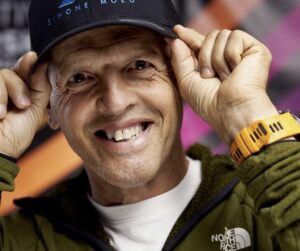It’s difficult to describe what is like to climb an 8,000m peak in winter. It’s easier to say what it’s not like. It’s not rewarding. It’s not fun. And no one would ever try it “because it’s there”.
Fair-season climbers speak of exhausting summit pushes, technical sections, objective risks, physical strain and scary moments but if all goes well, they assess the experience as positive. Try the same goal in winter, and struggle, despair, pain and fear become constant companions. There is no such thing as a “good weather window”. The most one may hope for is to survive. To quote Voytek Kurtyka, it’s “the art of suffering”.
This is a book about that suffering. It is also about the question, Why? In Winter 8000, Canadian author Bernadette McDonald continually probes that existential question. It elevates the book to more than a mere account of climbing expeditions.

As in her dozen other books of climbing biography and history, McDonald has deeply researched the nearly 200 winter attempts on 8,000m peaks and shaped this blizzard of material into a satisfying narrative. She chose to structure the book into 14 chapters, each one focused on the first winter ascent of one of the 8,000’ers. Understandably, the book ends with K2, the only one still unclimbed in winter.

The Polish Winter Everest team poses in Base Camp, 1980.
The history is all there: the first age of winter 8,000m climbing, led by the Polish ice warriors, and the new generation of Simone Moro, Adam Bielecki, Denis Urubko, Ali Sadpara, Alex Txikon… as well as powerful women such as Marianne Chapuissant, Eli Revol and Tamara Lunger.
The only missing expeditions are those that took place last winter, when the book was already at the printers — Jost Kobush, Alex Txikon and Tashi Lakpa on Everest, the teams around K2 and Denis Urubko’s bold attempt on Broad Peak.
The summit bids, Base Camp quarrels, personalities, failed attempts and finally the anguish or those who returned home are described in a kind but also unflinching style that is the personal signature of Bernadette McDonald.

Elisabeth Revol’s rescue by Denis Urubko (left) and Adam Bielecki (right) on winter Nanga Parbat.
For those of us who follow Himalayan expeditions, the book allows us to relive the stories we know well, and also to find a wealth of details that we did not know. As a journalist, I have followed winter expeditions for 20 years, some of them very closely. I am familiar with most of the characters and facts. But reading this book, I learned much more about those climbs and about the remarkable men and women who ventured there.
The book doesn’t flinch from examining the dark sides. It probes the motivations, the past experiences that drove the climbers’ decisions, their feelings toward the mountain and their partners and finally, the oft-neglected postscript. What came after turns out to be an essential part of the story, even if we didn’t realize we were missing it.
You can order the book here.






